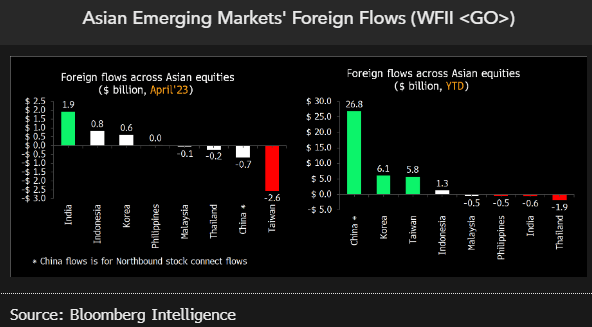China’s choppy recovery in five Bloomberg Intelligence charts
This analysis is by Bloomberg Intelligence Regional Market Analyst John Lee. It appeared first on the Bloomberg Terminal.
Cheerleading over China’s reopening has given way to long faces and furrowed brows. Online retail sales and Macau casinos’ revenue have outperformed, but April-May new property sales, oil imports and China’s PMI have disappointed. Restoring growth and investors’ confidence may require easing diplomatic tensions and a more vigorous policy response.
Online shopping may post expectations-beating growth
China’s 2Q retail sales growth might exceed the 11.9% consensus expects, powered by e-commerce receipts, according to senior analyst Catherine Lim. China’s April e-commerce retail sales leaped 22% on the back of aggressive shopping incentives from the likes of Alibaba and JD.com. That growth figure checks in at a stronger-than-expected 13% during the four months spanning January through April, and higher than the 9% growth at brick-and-mortar outlets. The disparity reaffirms the stickiness of e-commerce consumer buying patterns even after China’s abandonment of Covid Zero.
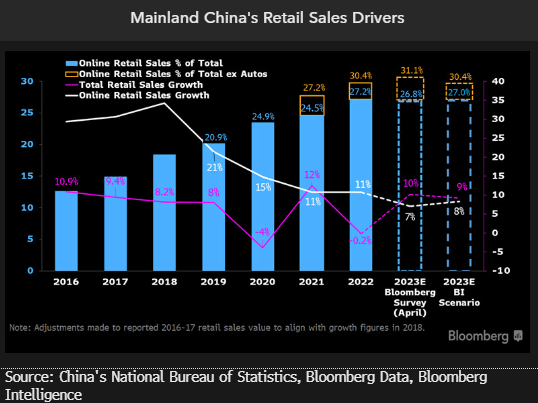
Chinese are traveling more, but spending less
Vacation-starved tourists are traveling more within China, but their per-head spending is noticeably less. The number of domestic trips in China during the Labor Day holiday in May surged 119% over 2019, although spending per traveler is still at 90% of pre-pandemic readings. BI analyst Angela Hanlee’s scenario calls for Macau’s gaming revenue to finish 2023 at 61% of 2019’s figure, up from a previous calculation of 42%, driven by a faster mass-market recovery. Some of Macau’s growth could be powered by cost-conscious visitors eschewing pricier destinations.
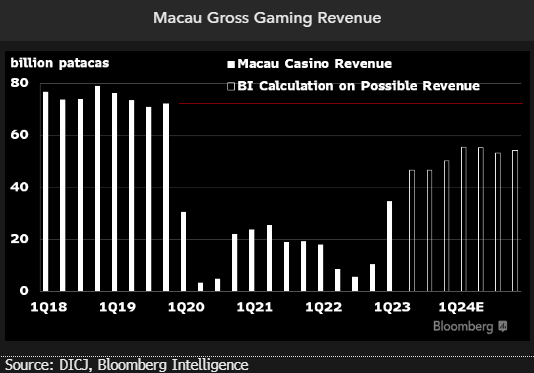
Falling property sales echo recovery’s precariousness
Residential home sales for China’s 10 largest developers plunged 12% sequentially in April, reversing some gains from February and March. Smaller developers — ranking 11 to 25 — fared worse, with April sales tumbling 18% after rising 48% in March. Home sales are on track to finish lower yet again in May, fanning concerns about China’s sputtering property-sector recovery, according to BI analyst Kristy Hung. Real estate accounts for about 20% of China’s GDP.
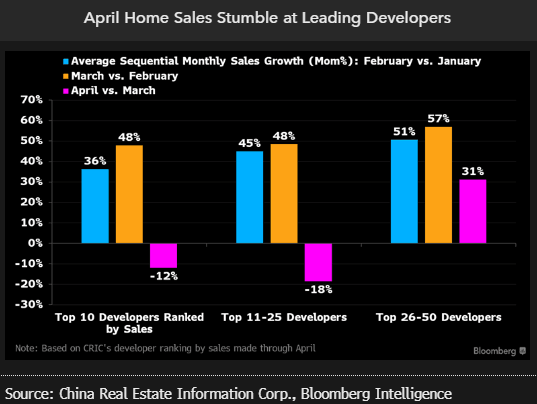
China’s oil imports signal weaker recovery
April’s decline in China’s manufacturing Purchase Managers’ Index (PMI) — after March’s sequential drop — amounts to a steady warning on demand for crude and other commodities. Based on calculations by BI analyst Henik Fung, China’s May crude imports could amount to 12.7 million barrels, down 6% from a year ago. This suggests that oil demand risks falling short of market expectations during the coming months.
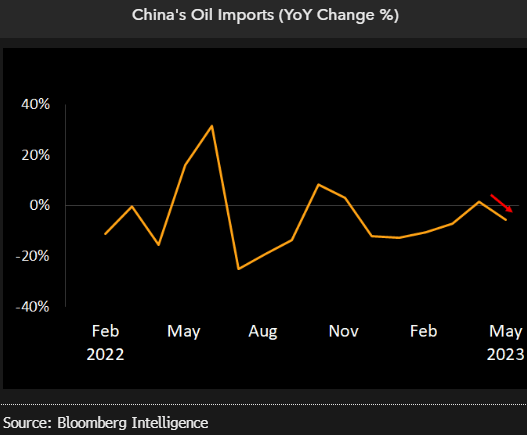
Foreign investors rotate to India, Indonesia and Japan
Emerging-market fund flows suggest fading exuberance around China’s reopening. China witnessed outflows during April, the first since Beijing abandoned Covid Zero late last year. Inflows were evident in India and Indonesia, and have been especially strong in Japan so far this year. Relighting the fuse on investors’ China fever could require using monetary policy to foster growth, stabilizing the property market, and some easing of US-China tensions, according to Bloomberg Intelligence senior equity strategist Marvin Chen.
